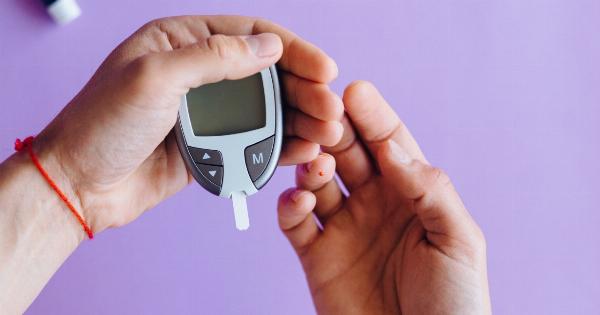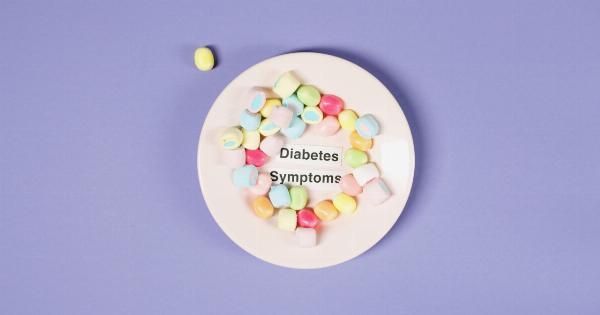Waterfall, also known as cataract, is a condition that affects the lens of the eye, leading to blurry vision and eventually blindness if left untreated. It is a common problem among the elderly, particularly post-menopausal women.
The prevalence of waterfall increases with age, and new studies have shown a potential link between waterfall and other health issues such as diabetes and obesity in post-menopausal women.
Understanding Waterfall
Waterfall occurs when the proteins in the lens of the eye clump together, causing cloudiness and a reduction in vision. The lens is responsible for focusing light onto the retina, which sends signals to the brain, allowing us to see clearly.
When the proteins in the lens become disorganized and clump, light cannot pass through easily, resulting in blurred vision.
Age-related changes in the lens, such as the breakdown of proteins and decreased flexibility, contribute to the development of waterfall. Post-menopausal women are more prone to waterfall due to hormonal changes that occur during and after menopause.
Estrogen, a hormone that helps maintain lens clarity, decreases during menopause, making the lens more susceptible to clouding.
The Connection with Diabetes
Recent studies have suggested a connection between waterfall and diabetes in post-menopausal women.
Diabetes is a chronic condition characterized by high blood sugar levels, either due to the body’s inability to produce insulin (Type 1 diabetes) or insulin resistance (Type 2 diabetes).
Research has shown that individuals with diabetes are at a higher risk of developing waterfall compared to those without diabetes.
The exact mechanism behind this relationship is not yet fully understood, but several factors contribute to the increased risk.
One potential factor is the influence of high blood sugar levels on the lens. Elevated glucose levels can lead to the accumulation of sorbitol, a sugar alcohol, within the lens.
Sorbitol draws water into the lens, causing it to swell and become cloudy, ultimately leading to waterfall.
In addition, diabetes is associated with chronic inflammation and oxidative stress, which can adversely affect the lens and increase the risk of waterfall.
The accumulation of advanced glycation end-products (AGEs) in the lens has also been observed in individuals with diabetes. AGEs are formed when glucose reacts with proteins in the body, and their presence can contribute to lens damage and clouding.
Obesity as a Contributing Factor
Obesity, defined as having a body mass index (BMI) above 30, is another factor that has been linked to both diabetes and waterfall.
Post-menopausal women are particularly at risk for obesity due to hormonal changes, decreased metabolism, and lifestyle factors.
Excess body weight is associated with insulin resistance, a condition in which the body’s cells fail to respond effectively to insulin.
Insulin resistance is a precursor to Type 2 diabetes and can contribute to the development of high blood sugar levels. Therefore, obesity indirectly increases the risk of waterfall in post-menopausal women by promoting the development of diabetes.
Moreover, obesity itself has been suggested to increase the risk of waterfall independent of diabetes.
Adipose tissue, or fat cells, produce various inflammatory cytokines and hormones that can negatively impact the lens and increase the likelihood of cataract formation. Additionally, obesity is associated with metabolic dysfunction and oxidative stress, both of which can further contribute to the development of waterfall.
Prevention and Management Strategies
While the link between waterfall, diabetes, and obesity in post-menopausal women is concerning, there are steps that can be taken to reduce the risk and manage these conditions:.
1. Maintain a Healthy Weight
Achieving and maintaining a healthy weight can help reduce the risk of both diabetes and waterfall. A balanced diet and regular physical activity are essential components of weight management.
Consult with a healthcare professional to create a personalized plan that suits your needs and goals.
2. Manage Blood Sugar Levels
If you have diabetes, it is crucial to monitor and manage your blood sugar levels. This may involve taking medication as prescribed, following a healthy diet, exercising regularly, and regularly checking your blood sugar levels at home.
3. Get Regular Eye Examinations
Regular eye examinations are essential for detecting and managing eye conditions such as waterfall.
Post-menopausal women, especially those with diabetes or obesity, should schedule routine eye check-ups to monitor their eye health and catch any issues early on.
4. Follow a Nutrient-Rich Diet
A diet rich in fruits, vegetables, whole grains, and lean proteins can contribute to overall health and potentially reduce the risk of waterfall and diabetes.
These foods provide essential vitamins, minerals, and antioxidants that support eye and overall health.
5. Quit Smoking
Smoking has been linked to an increased risk of several eye conditions, including waterfall. Quitting smoking can significantly improve eye health and reduce the risk of developing waterfall in post-menopausal women.
Conclusion
Waterfall is a prevalent eye condition among post-menopausal women, and recent research suggests a connection between waterfall and diabetes as well as obesity.
The precise mechanisms linking these conditions are still being studied, but factors such as high blood sugar levels, chronic inflammation, and oxidative stress play a role.
Post-menopausal women should prioritize regular eye examinations, maintain a healthy weight, manage blood sugar levels, and follow a nutrient-rich diet to reduce the risk of developing waterfall.
Quitting smoking is another crucial step in safeguarding eye health.
With proper prevention and management strategies, post-menopausal women can take proactive steps towards preserving their vision and overall well-being.






























